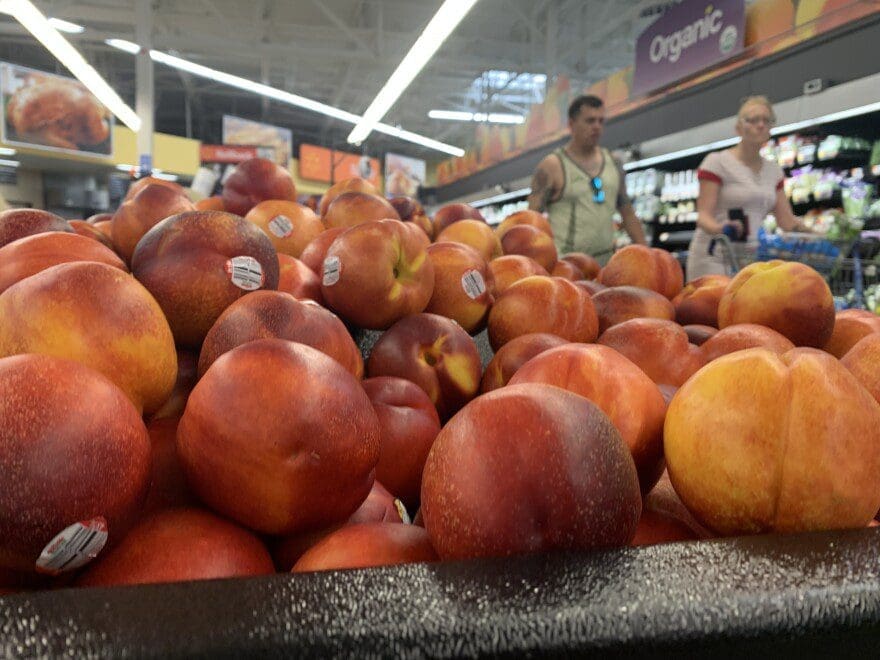Topeka, KS— A new study gives fuel to arguments that the state could significantly spare children from landing in foster care if the state spent more on things like food benefits for struggling families.
A University of Kansas study estimated foster care caseloads could drop by 14% if taxpayers spent more heavily on family food benefits.
Nearly three out of four cases of maltreatment of children — something that can land kids in the chaos of foster care — stem from neglect that happens when families can’t make rent, struggle to buy groceries or pay for utilities.
The KU study found that in 2016 Kansas sat near the bottom for “income generosity” programs that make families eligible for government help. For instance, some states don’t count child support against how much assistance a family might qualify for.
Donna Ginther, the director of the Institute for Policy and Social Research at KU, said food assistance drives down reports of children being mistreated or neglected because it gives families more financial flexibility.
“People receiving SNAP (Supplemental Nutrition Assistance Program, or food stamps) benefits are really low income and any amount of money at the margin will make a difference,” she said. “The more generous a state is, the better the outcomes for children.”
Ginther’s study looked at food assistance, but people advocating for more government assistance to poor families contend other social safety programs also can prevent the sort of household collapses that can put children in foster care. Another study in 2017 said a $1 increase in the minimum wage decreases child neglect reports by 9.6%.
Ginther called on lawmakers to be more generous with such programs, but they don’t enjoy much political support among lawmakers who’d have to approve increases. In 2015, Kansas passed a series of welfare program reforms called the HOPE Act. It barred state agencies from promoting food benefits, limited ATM withdrawals of welfare money to $25 a day and lowered lifetime eligibility for the Temporary Assistance for Needy Families program.
Lawmakers at the time said that bill would break people from dependency on government assistance and get more people back in the workforce.
“A person has the right to refuse to work, but the taxpayer also has a right to not support that person,” said then-Department for Children and Families Secretary Phyllis Gilmore in 2015. “We have an obligation to be responsible stewards of taxpayer dollars. And these are policies that help everyone win.”
The HOPE Act also required 20-hour work weeks or job training programs. People who didn’t comply were booted off state-funded support. Kansas Republicans passed similar legislation this year while echoing comments from 2015.
“We got a lot of folks that are trapped in poverty,” said Rep. Pat Proctor, a Leavenworth Republican, on the House floor this year. “It is morally wrong to perpetuate a system that keeps people poor. If we have the opportunity to give these folks … job training so they can be more successful … that’s a 100% good thing.”
Despite past legislation, Quinn Ried, policy research analyst for Kansas Appleseed, is becoming more optimistic about the future. He said more bipartisan support exists for some measures, like removing a part of state law that prohibits some drug felons from getting food assistance.
Ried said the number of foster kids has dropped in recent years, which he attributes to more liberal welfare programs that grew during the pandemic.
“Two years ago, there wasn’t even a hearing on it,” he said. “There was good groundwork laid in that regard last session, and I think we can build on it going forward.”
Ried said spending upfront saves taxpayers in the long run. Foster families are paid different rates depending on the level of care for the child, but the cheapest foster rates for one child are around $300 a month, other rates top $700. The maximum SNAP benefit for a household of three people is $658.
Even if political opposition stalls any changes next spring, the Kansas Department for Children and Families is trying to address the issue now.
In 2014, half the children in foster care entered because of a FINA removal. FINA, or families in need of assessment, could be a caregiver struggling with substance abuse or struggling to adequately care for a child. In 2022, only one in three children enter foster care because of FINA.
DCF Secretary Laura Howard said that’s the result of a push by DCF to help families and keep kids with their parents. She said foster care is traumatic and providing family support matters.
“We don’t really want to be a state or a society that says, ‘Because you’re poor or because you’re struggling to deal with a child … that we want to take your child away from you,’” she said. “We want to support that family.”
Blaise Mesa reports on criminal justice and social services for the Kansas News Service in Topeka. You can follow him on Twitter @Blaise_Mesa or email him at blaise@kcur.org.
The Kansas News Service is a collaboration of KCUR, Kansas Public Radio, KMUW and High Plains Public Radio focused on health, the social determinants of health and their connection to public policy.
Kansas News Service stories and photos may be republished by news media at no cost with proper attribution and a link to ksnewsservice.org.













